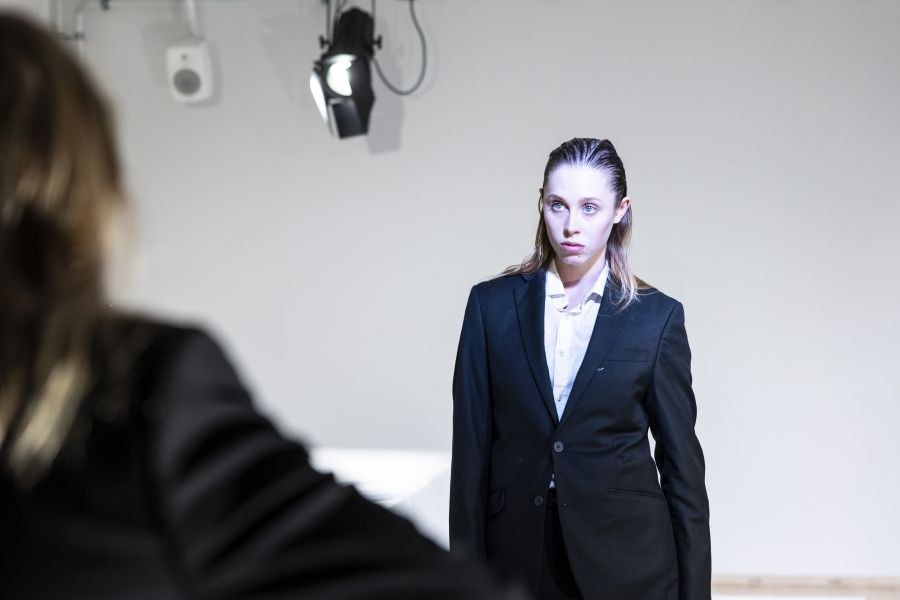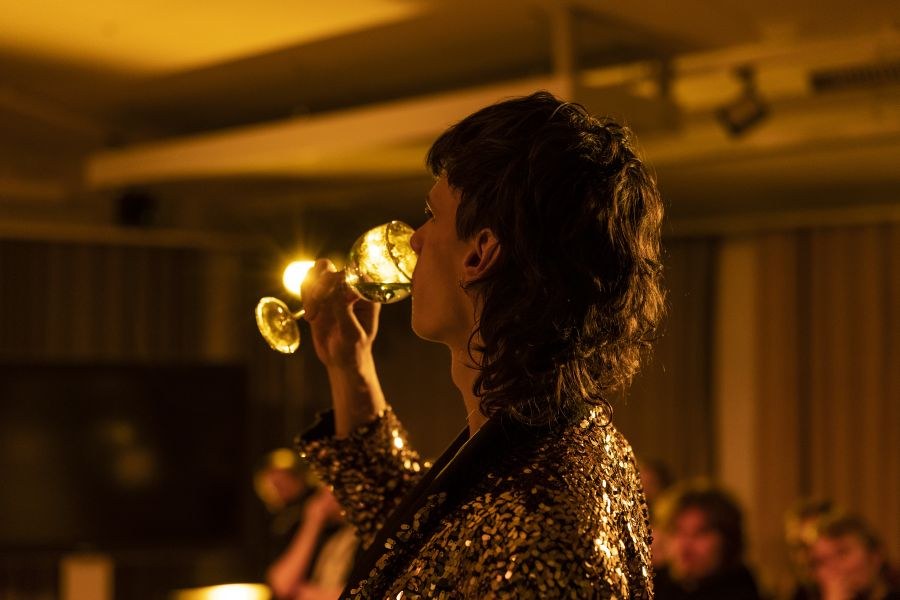The Finnish theatre is hit by a generational crisis

Giovanzana, Sippola and Suonperä agree that the Finnish theatre must develop and redefine itself based on what is important in society right now. Giovanzana emphasises, that the focus the education in the theatre art is currently to attract people who can radically change the field:
“We need to think again about teaching acting because there are huge unresolved issues in our society that have a significant impact on theatre work. The theatre audience is getting older, and it is hard to reach the new audience. It is difficult to change a system that has worked in the same way for 60 to 70 years. We have major challenges to tackle”, he points out.
Finnish theatre does not represent modern society
One of the aspects challenging the institutional theatre is its homogeneity. Representation issues have long been addressed by the theatre sector, but efforts to promote it are progressing slowly. In Giovanzana’s view the Finnish society has two kinds of stories about identity:
“I think we have two separate narratives of identity. The first one is what we have inherited from the Winter War, and the second one is what is happening right now. There is a deep gap between these, which the theatre is unable to fill at the moment. The institutional theatre does not represent the new Finnish society in any way. I do not believe that young people recognize themselves from this so-called Finnish identity after the Winter War”, he says.

“The theatre’s homogeneity has been a matter of much interest for a long time, and there is still a fierce debate. It is worth noting that we too have quite homogeneous people graduating from our class, and it is important to examine this issue critically. Theatre is a platform where the diversity of Finnish society can be studied and made visible,” Suonperä notes.
“I would like to think that diversity and inclusiveness are not things that have to happen in the future but are already happening. However, unfortunately, there is room for improvement in terms of speed. Fortunately, our training provides a lot of tools for giving space through the presentations to those whose voices are not yet heard,” Sippola says.
Giovanzana emphasises, that young audience must be enabled to see themselves on the stage:
“Young people’s experience of the world is significantly more global and diverse than that of older generations. In Finland, for example, we have several different languages in addition to Finnish and Swedish, such as the Sami languages and the Romany language. We have a lot of communities that are not represented in the theatre. I would like to see the theatre culturally sustainable and diverse,” Giovanzana says.

“There are large baby-boom generations, which is why we have a bias in terms of age distribution. Admittedly, state-supported theatres are rather outdated in a structural way, even though there is a great deal of effort to reform them. The repertoires often revolve around the same classics and do not necessarily attract new people to the theatre. I believe that technology and audio-visual art offer opportunities to get a new audience into the theatre,” Suonperä mentions.
“A large proportion of experienced theatre audiences are looking for a high culture from the performances, while new audiences should be attracted by other means. In a way, I understand the idea of going to the theatre to see tradition and classics. However, it is a difficult situation if art is made from the point of view of what the theatre audience is accustomed to and what makes them to come to the theatre over and over again. It leaves no room to attract a new audience,” Sippola notes.
Digitalisation takes on the attractiveness of traditional theatre
Digitalisation is one of the challenges the theatre is facing. When entertainment is within the reach of the consumer, going to a theatre on-site may be a key issue. Like the rest of the cultural sector, the theatre continues to recover from the COVID-19 pandemic, which caused an increase in the threshold for leaving home.

“The theatre has in principle been a form of entertainment to the public, and people have spent time and money in their spare time to enjoy. Today pleasure and leisure revolve around digital forms, so it is no wonder that this reduces things that are experienced in the real world,” Sippola points out.
“At the moment, children are watching series from their phones instead of going to the theatre and this way they become teenagers who are not used to going to the theatre. With the equipment in hand reach, going on site becomes a threshold issue. The children’s theatre should be invested in to have visitors to the theatre in the future,” Suonperä notes.
“In my further research, I am going to focus on how the digital revolution affects acting and dramaturgy. I also want to study how digitalisation changes our way of receiving theatre and teaching acting,” Giovanzana says.
Culture needs more support from the government
Sippola emphasises that people will find their way to the performances, as long as the government does not leave the business behind:
“I see that interest in theatre and the theatre industry has fallen due to the current political situation. The message from above is powerful: Do not do or if you do, do entertainment. The funding of the theatre is based on serving an audience that already attends the theatre. It is a difficult starting point in a situation where we want to find a new audience,” she notes.
“In Finland, culture is traditionally based on funding. To get funding, an artist often has to be famous or visible. Culture funding bodies often have agendas that they want to fund and culturalists naturally have to build their art around them. The funding bodies thus have the power to shape art and what kind of culture is produced,” Giovanzana points out.

However, Giovanzana, Sippola and Suonperä share the view that there is light at the end of the tunnel, and theatre performances are not going to be in history.
“People always need real and genuine meetings, and it is not easy to replace live energy from performances digitally. I feel that we people are going to get hurt if we fall into such a state that we are not together. Theatre is a communal format and people need the real live atmosphere,” Suonperä says.
“I absolutely agree. People love events, and in theatre, anything is really possible. You can play with people’s imaginations. I think the performances are all right and people will find their ways to watch them,” Sippola continues.
“I think that co-productions between the institutional theatre and private theatres are the future of the Finnish theatre. However, we have not yet reached that point. The theatre should be more nuanced and include, for example, dance, puppet theatre and circus. It is time to bring this kind of vision to the theatre,” Giovanzana says.
Text: Essi Niemenmaa





